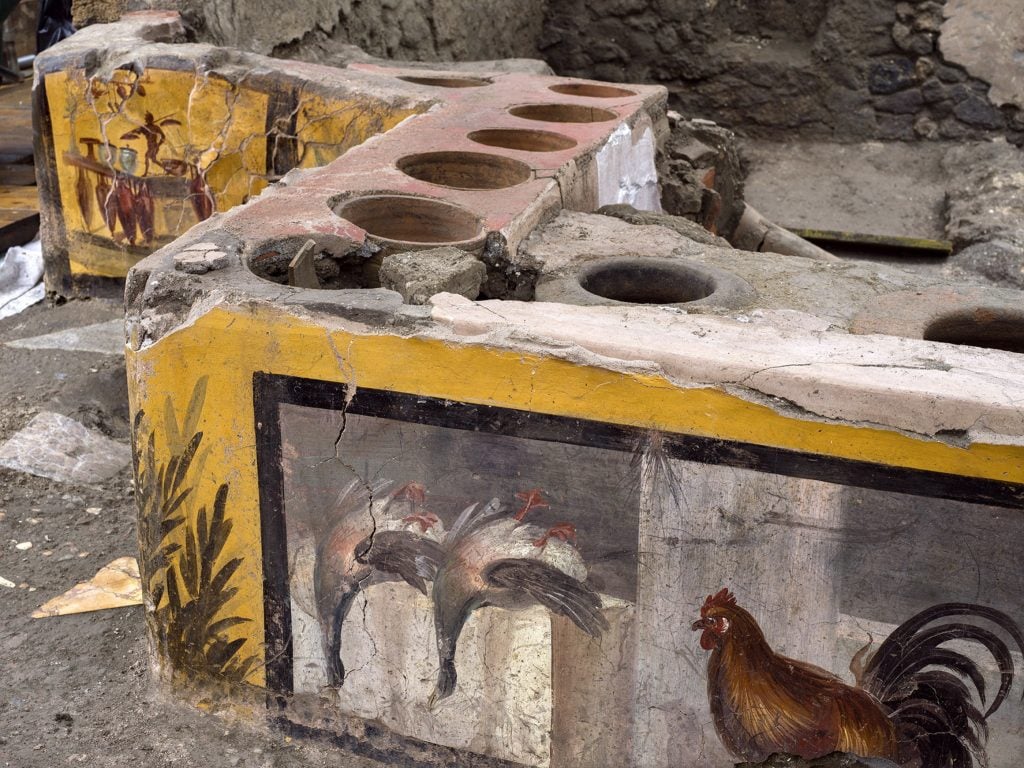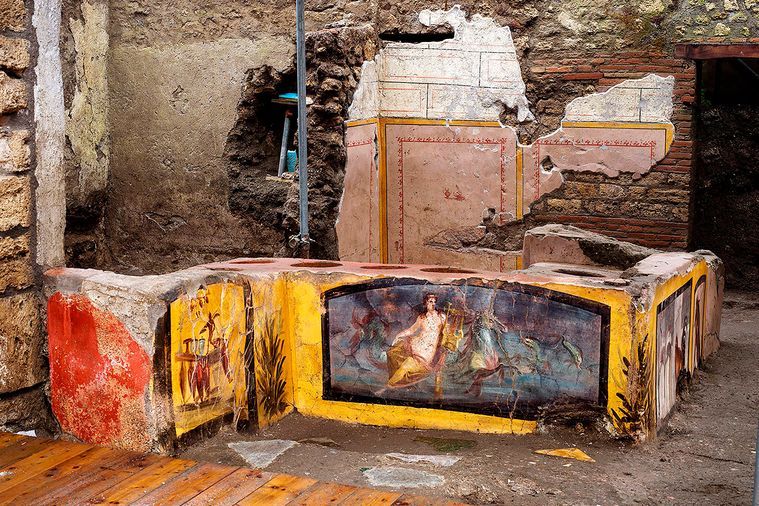Archaeological discoveries continually offer us glimpses into the lives and cultures of ancient civilizations. One such fascinating revelation is the recent unearthing of a thermopolium in the Roman city of Pompeii. These ancient fast food restaurants served as communal dining hubs, providing insight into the diet and social practices of the time. This particular thermopolium, discovered in 2019, is now open to the public, allowing visitors to step back in time and explore the culinary history of Pompeii.
The Discovery of the Thermopolium

Archaeologists working in Pompeii unearthed a well-preserved thermopolium, a type of ancient Roman fast food restaurant. This establishment, located in the Regio V section of the city, adds to the approximately 80 other thermopolia found throughout Pompeii. These eateries were essential to the daily lives of many Pompeians, especially those who could not afford kitchens in their homes.
A Glimpse into Roman Cuisine

While modern visitors won’t have the chance to taste the original Roman delicacies once served at the thermopolium, they can view the vibrant frescoes that adorned its walls. One artwork features a rooster, likely representing an ingredient used in the restaurant’s dishes, while another depicts a mythological scene with a Nereid riding a sea-horse. A third fresco shows a collared dog alongside Roman-era graffiti, which translates to “Nicias Shameless Shitter,” possibly an insult directed at the establishment’s owner.
Culinary Insights from Excavations

The excavations have provided valuable information about the diet and culinary practices of ancient Pompeii. Archaeologists found duck, pig, goat, and fish bones, along with snail shells and fragments of earthen pottery. These findings suggest that the thermopolium may have served a variety of meat and seafood stews. According to experts, typical dishes at such establishments included salty fish, baked cheese, lentils, and spicy wine. Remarkably, one jar still retained a strong smell of wine when first discovered.
Cultural and Social Context
The thermopolium was a central part of Pompeian life, particularly for the poorer citizens who relied on these establishments for their daily meals. In contrast, wealthy Romans typically had enslaved workers prepare elaborate feasts in their homes, which were then served in opulently decorated banquet halls. The recent discovery of this thermopolium has deepened our understanding of the social and economic dynamics of ancient Roman society.
The Last Supper in Pompeii Exhibition

The culinary traditions and dining culture of Pompeii are currently being showcased in an exhibition titled “Last Supper in Pompeii” at San Francisco’s Legion of Honor museum. The city’s abrupt destruction by the eruption of Mount Vesuvius in 79 A.D. preserved food and cookware, offering a snapshot of daily life frozen in time.
Additional Discoveries in Regio V
The Regio V section of Pompeii, where the thermopolium was found, has yielded numerous significant discoveries over the years. Recent excavations have uncovered skeletons, including that of a man believed to have been killed while fleeing the volcano, and a collection of amulets possibly owned by a female sorcerer. Human bones found at the thermopolium site suggest that the proprietor may have perished during the eruption.
Conclusion
The discovery of the thermopolium in Pompeii is a remarkable window into the past, revealing the culinary habits and social structures of ancient Roman society. As visitors explore this ancient fast food restaurant and its surrounding area, they gain a deeper appreciation for the daily lives of the Pompeians. These archaeological finds not only enrich our understanding of history but also connect us to the human experiences that transcend time.
